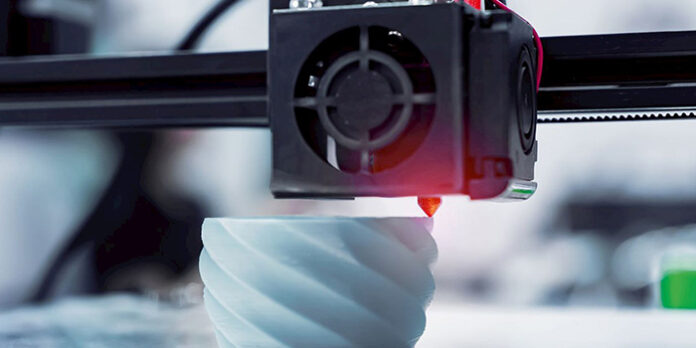In 2021, 2.2 million 3D printers were shipped worldwide, with 21.5 million units expected to be shipped by 2030. Increased demand for prototype applications from a variety of industries and industrial verticals, including healthcare, automotive, aerospace, and military, as well as extensive research and development in 3D printing, is expected to drive market growth. Implementing additive manufacturing entails offering installation services, consulting solutions, and customer support, as well as dealing with numerous copyright, licensing, and patenting difficulties. Prototyping, developing structures and end products, modeling, and shortening time to market are all aided by additive manufacturing. As a consequence of this, production costs have plummeted, and manufacturers are in a better position to sell things at competitive prices. As one of these benefits, 3D printer adoption is increasing.
Additive Manufacturing Processes:
- Extrusion of Material
- Jetting of Binders
- DED stands for Directed Energy Deposition.
- Lamination of Sheets
- Fusion of Powder Beds
- Polymerization in a Vat
Technologies for Additive Manufacturing
- Sintering is the first step, which entails heating the material without liquifying it in order to create complex, high-resolution objects. Metal powder is used in direct metal laser sintering, whereas a laser is used in selective laser sintering to bond thermoplastic particles together.
- The second type of AM technology completely melts the materials. This includes direct laser metal sintering, which utilizes a laser to melt layers of metal powder, and electron beam melting, which melts the powders with electron beams.
- Stereolithography, another main category of technology, uses a technique known as photopolymerization, in which an ultraviolet laser is blasted into a vat of photopolymer resin to build torque-resistant ceramic parts capable of withstanding severe temperatures.
Regional Analyses:
In terms of country contribution, the United States has the highest contribution of all countries at 22%. China (8%), Germany (7%), the United Kingdom (7%), Italy (6%), Australia (5%), the Netherlands (4%), and other nations contribute the remaining 41%. The engineering field has a maximum contribution of 29% in terms of area contributions. Materials Science (24%), Biochemistry, Genetics, and Molecular Biology (11%), Chemical Engineering (8%), Medicine (6%), Physics and Astronomy (5%), Computer Science (5%), and 7% contribute to the other disciplines. In 2021, North America was the dominant market for additive manufacturing, contributing more than 34% of total revenue.
North America is home to advanced economies such as the United States and Canada. These economies are recognized as early adopters of cutting-edge technologies. In contrast, Europe emerged as the second-largest regional market. Europe is the largest region in terms of its geographical footprint. Europe also has a number of enterprises with strong additive manufacturing technological capabilities.
Asia-Pacific is poised for enormous growth. The regional market is predicted to grow at the quickest CAGR over the projection period. The expansion of the regional market can be attributed in part to the continual enhancements and upgrades sought by the region’s manufacturing industry incumbents. Asia Pacific is emerging as a manufacturing powerhouse in the automotive, pharmaceutical, and consumer electronics industries. Rapid urbanization is also an issue. Over the forecast period, it is expected to have a substantial impact on driving three-dimensional printing adoption in the area.
Recent Development:
Stratasys, a polymer 3D printing business, purchased Covestro AG, a company that supports the additive manufacturing materials market, in August 2022. Innovative materials excel at creating new 3D printing applications, particularly in the manufacturing of end-use items such as dental aligners and automobile components. With this acquisition, Stratasys can enhance its business objective of supplying the industry’s best and most extensive polymer 3D printing portfolio. In addition, the company can raise its investments in cutting-edge 3D printing materials.
Carbon acquired ParaMatters, a provider of additive manufacturing software, in August 2022. By employing the automation methodologies of this software, Carbon’s product development teams will be able to generate higher-performance part designs in less time. These designs will have improved geometry as well as increased performance features.
Design Flexibility With additive manufacturing, elaborate and complicated geometries that would be difficult or impossible to construct with traditional production methods can be realized. This opens up new avenues for product design innovation. Reduced Unlike subtractive manufacturing, which removes extra material, additive manufacturing creates products layer by layer, minimizing waste. This is especially beneficial for ecologically conscious manufacturing. Customization and Personalization Additive manufacturing allows for easy product customization according to individual preferences and demands. This is beneficial in fields like healthcare, where patient-specific medical equipment can be developed.
